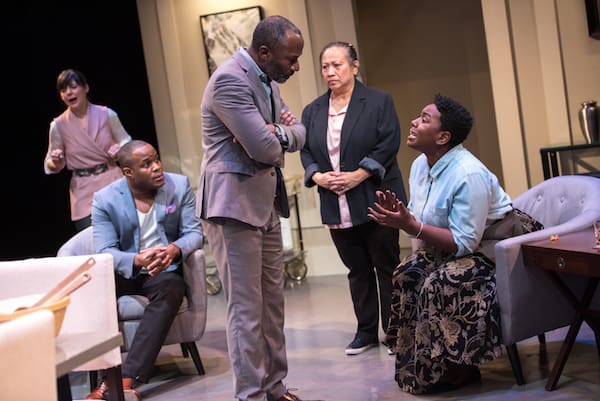
Calpurnia is a meta play written and directed by Audrey Dwyer, a black Torontonian woman, about Julie, an upper class black Torontonian woman who is writing an updated version of To Kill a Mockingbird from the perspective of the Finch-family maid Calpurnia. It is a co-production by Nightwood Theatre and Sulong Theatre companies at Buddies In Bad Times Theatre.
I went into this never having read or seen any version of To Kill A Mockingbird, but very excited for what would certainly be compelling material. The play mimics familiar conversations that probably don’t receive due criticism in everyday life and subtly demands you reflect on them, or sometimes it just shouts it for the people in the back. Regardless of how actively you engage with discourse on race, this play will have something (or a lot of somethings) for you to think about. It’s a play whose existence is important, but even more important is what you can learn having seen it.
After everyone had found their seats and the proverbial curtains were drawn, an opening address acknowledged the indigenous people that came before us and the lands that we were now sitting on. This stands in stark contrast to my last theatre experience where thoughtful acknowledgement was an afterthought. And the pay-what-you-can rates on certain days add up to a theatre that clearly cares.
The play takes place over the span of one day in Julie’s home with her family, their maid, and a few visits by romantic and business partners outside the family. Julie is experiencing some writer’s block, and her family (though encouraging and supportive), does not seem to understand her feelings and motivations behind her lofty rewrite. As well, they’re all demanding various things from her despite her disinterest and lack of available time. Naturally this leads to some outrageous results definitely better left unspoiled.
Everything feels very tangible due to the prevalent social themes and modern setting, and will hold your attention the whole way through. The dialogue is simultaneously daring and funny – strengthened further by tight character performances telling the deeper story with body language. I’m always interested in other people’s thoughts on what I’m seeing and the mirrored bleacher seating facilitated this wonderfully. With some of the weightier lines, seeing the reactions of fellow theatre goers across the room adds layers to how you internalize things.
There’s a lot of emotional ground covered – laughs, embarrassment, outrage, heart, and ample topics for self reflection. On that note, there is an educational prompt on the website for some pre- and post-play discussion, certainly worth checking out if you read this before seeing the play. There’s not a lot of time left, but if you get a chance, Calpurnia deserves to be seen.
